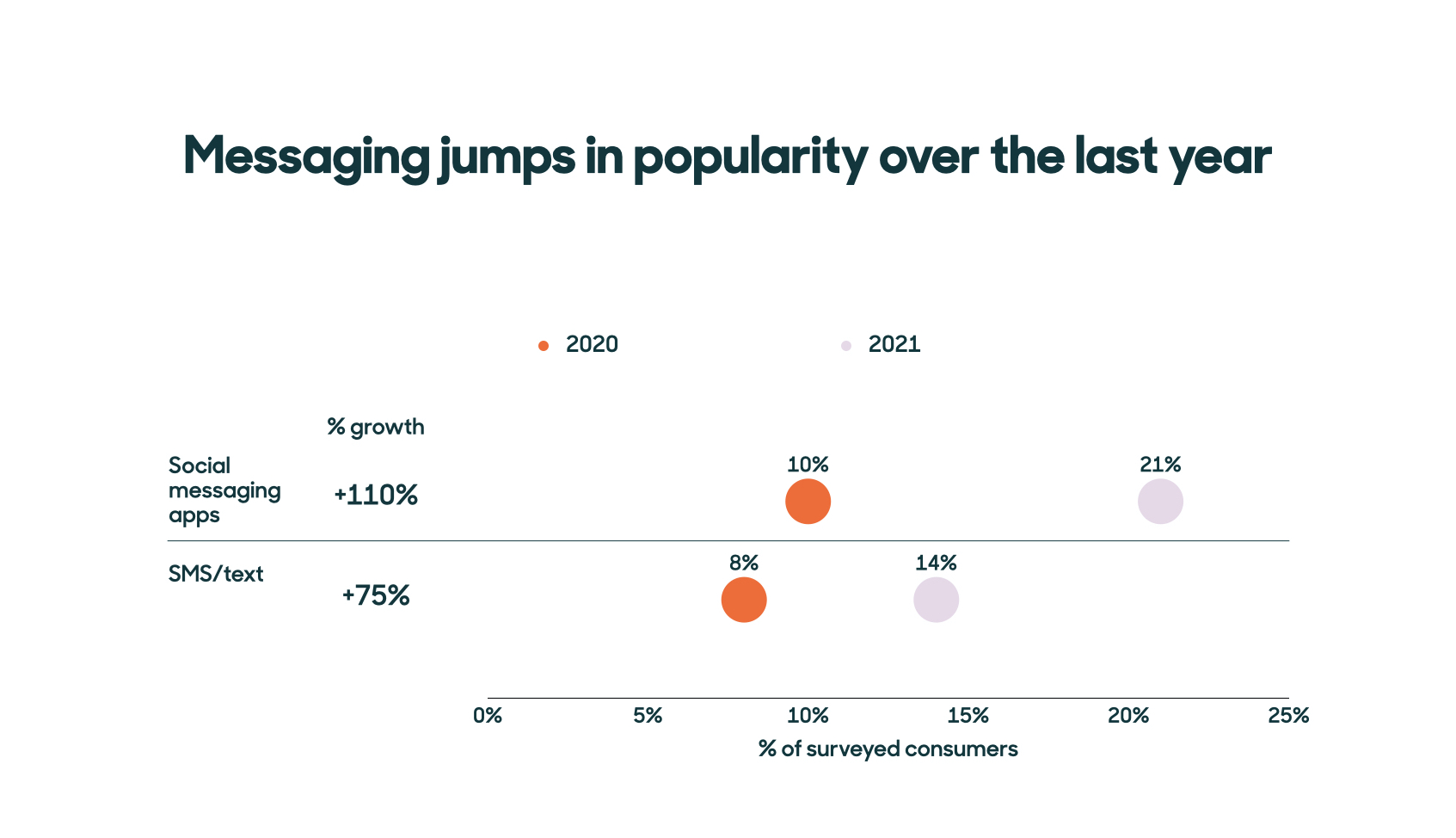What customers want and what they get might not always align, but the stakes are getting higher for any business that falls short. 80 percent of people say they’d switch to a competitor after more than one bad customer experience, according to our 2021 Customer Experience Trends Report.
And that’s a number that should have most companies paying attention. Why? Customer expectations have shifted considerably over the past year.
- What are customer expectations?
- Examples of customer expectations
- How have customer expectations changed?
- Customer expectation management tips
By Maggie Mazzetti
What are customer expectations?
By definition, customer expectations are your customers’ ideas of how each interaction with your company should go. From how long they wait to what channels they can use, this holds true for any part of the customer journey. Customers want (and expect!) the very best, and if you don’t give it to them, they’re happy to look elsewhere.
Half of your customers say they’re unlikely to return after just one bad experience, according to our Trends Report. This means you may only have one chance to impress them. But after a year of unprecedented change, it’s likely that how they behave and what they expect look quite different.
What are examples of customer expectations?
Customers expect a lot from the companies they do business with. Here are some examples of what matters to them:
- Quick and easy resolutions to customer complaints
- Access to preferred service channels
- Opportunities to answer questions themselves via help centers
- Personalized experience
- Data protection and privacy
How have customer expectations changed?
When one company raises the bar for customers, every brand is expected to follow. David Mattin, founder of New World Same Humans, calls it expectation transfer. When businesses take innovative leaps forward, they drive new (higher) expectations among customers.
Uber, for example, changed how quickly customers expected a ride at their door. “Those expectations spread,” said Mattin, “becoming the now well-established trend known as on-demand.”
Cue a global pandemic. Suddenly, customers had to adjust their buying habits—almost overnight. Fundamental changes to their expectations soon followed. These are challenges for any business, but companies can meet these expectations by continuing to focus on improving the customer experience.
- Customers expect seamless online transactions
- Customers want companies to lead with their values
- Customers expect companies to meet them wherever they are
1. Customers expect seamless online transactions, and it’s a high bar
As everything shifted online, smaller companies and non-digital natives suddenly faced a very high bar set by digitally savvy leaders that drive customer expectations and customer engagement online. And from product availability, to the ease of buying and speed of shipping, matching these expectations is no easy feat.
65 percent of customers want to buy from companies that offer quick and easy online transactions
65 percent of customers want to buy from companies that offer quick and easy online transactions, according to the 2021 Zendesk Customer Experience Trends Report. Half gave Amazon the highest marks for customer service.
2. Customers expect companies to lead with their values
It’s not enough for companies to simply provide fast, friendly customer support. In a world marked by uncertainty, customers are seeking empathy and want to buy from companies that reflect their values. According to our recent survey:
- 49 percent are seeking more empathy from customer support agents
- 54 percent want to buy from companies that prioritize diversity, equity, and inclusion in their communities and workplaces
- 63 percent want to buy from companies that are socially responsible

3. Customers expect companies to meet them wherever they are
As the world changed around them, customers changed right with it. 64 percent of customers say they tried a new channel like live chat to engage with customer support teams during the pandemic and 75 percent plan to keep using it. Put simply, customers want more options when they need to reach out. And many now prefer to use the same communication channels that they use to connect with family and friends.
Over the last year, the use of messaging apps like WhatsApp and Facebook Messenger, has soared. Social messaging alone saw a 110 percent jump in popularity compared to 2020, followed closely by a 75 percent increase for SMS/text.
Many customers now prefer to use the same channels that they use to connect with family and friends.
And it’s not enough to simply offer the channels, customer service teams must be able to smoothly transition from one to another. This means that customers can switch to whatever is convenient for them, without having to repeat themselves.

5 customer expectation management tips
Keeping up with rising customer expectations starts with prioritizing customer experiences. Luckily, companies are already pushing ahead. 63 percent of support leaders say that CX is more important to their company now than a year ago. And it makes sense since 75 percent of customers say they’ll spend more to buy from a company that treats them well.
But saying and doing are two different things. Here’s what service teams need to know to match customer expectations now and in the future:
- Offer a range of channels
- Streamline conversation
- Boost self-service
- Personalize
- Get proactive
1. Offer a wide range of channels for customer service
Customers get frustrated when there’s only one avenue for customer service available. Why? Not all customer service experiences are the same and communication preferences depend on the issue.
Data shows that 76 percent of customers want phone support when they’re dealing with a complex issue like a product malfunction. But customers appreciate email, live chat, SMS/text, and social media for other purposes.
2. Streamline customer support conversations across all channels
It’s one thing to have different service channels, but customers should also be able to switch between them for a seamless experience. Companies who perform best across key support metrics, including faster response times and higher customer satisfaction rates, are three times as likely to have adopted omnichannel support.
From social media to live chat, omnichannel integrates everything into one streamlined workspace. But investment in omnichannel actually dropped 10 percent last year. Customer service teams must do what they can, with the resources they have, to keep up as customer expectations rise.

3. Boost self-service (and AI) resources
If people can solve their own problems without waiting for a customer service representative, they’re happy to do it. Self-service resources, like a knowledge base or help center, can intercept would-be tickets by directing customers to answers online. And 72 percent of customers say they try self-service first at least half the time before contacting a member of the support team.
AI can make it easier to connect customers to the answers they need without even involving an agent. Though more companies are turning to AI-powered chatbots, usage rates remain low—especially for smaller companies.
4. Personalize and protect
Personalization has become the hallmark of any good customer experience. In fact, 75% of customers say they expect personalization when making purchases. But paradoxically, fewer and fewer customers want companies to have access to their data. Why? A lack of transparency around what’s being collected and how it’s being used has eroded trust.
75 percent of customers expect personalization when making purchases.
The stakes are high, but organizations that protect customer data and are transparent about their policies have an opportunity to stand out from the pack. Transparency builds trust, trust becomes customer loyalty—a winning strategy for building lasting relationships with customers.
5. Get proactive
If you’re aware of common problems or issues for customers, it makes sense to get ahead of them. With in-product messaging, how-to videos, or even an emailed list of best practices, you can guide customers to quick solutions. Learn more with Zendesk’s customer experience platform.
Not only does this help with managing customer expectations, it can also mean a smoother experience for everyone involved. After all, these are long-term investments in your customers, and your business.
This article originally appeared on Zendesk.













